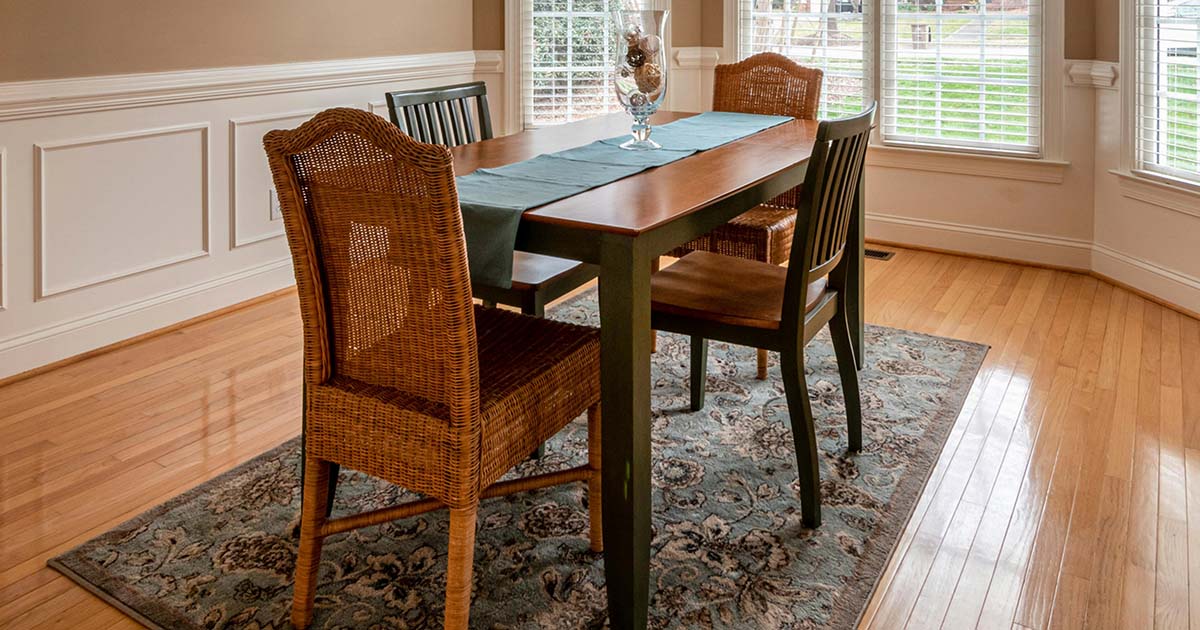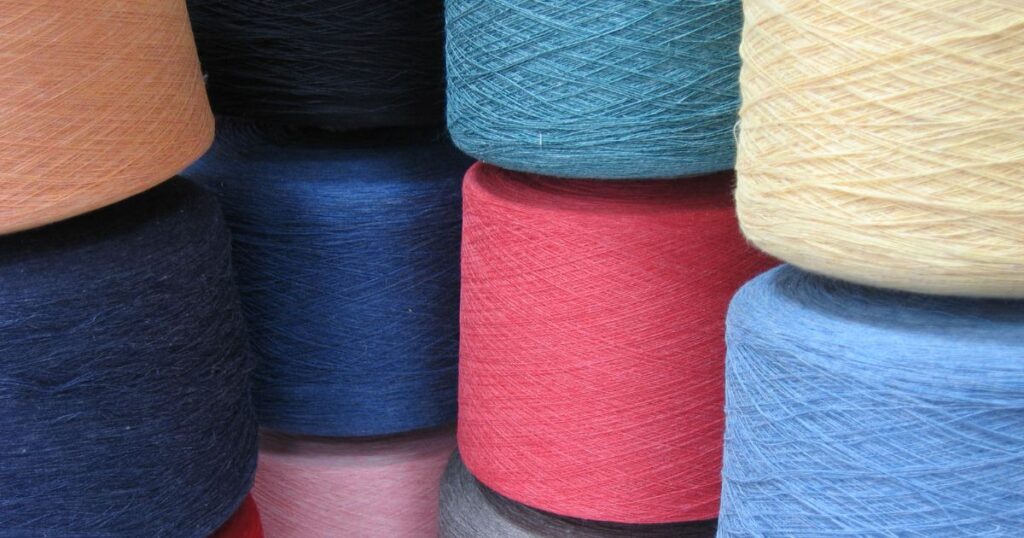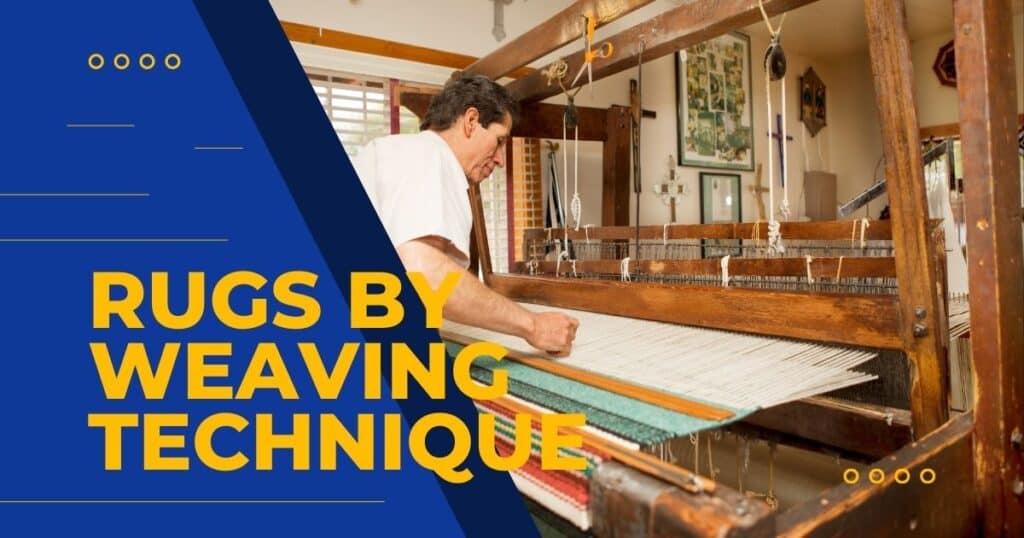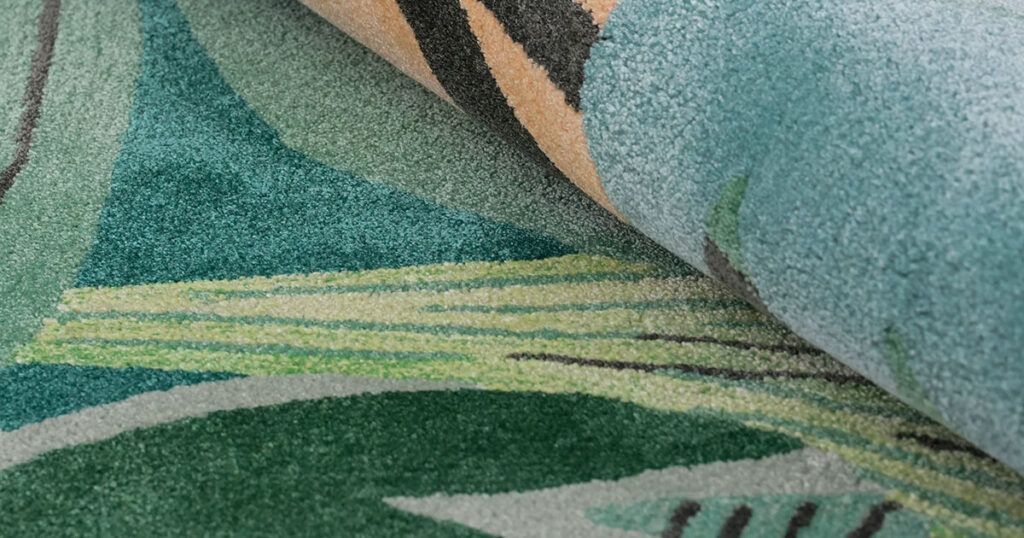Picking a rug isn’t just about finding a pretty pattern.
It’s about matching the right rug to your space, and its working conditions.
This guide covers key rug selection criteria for homes and businesses.
You’ll learn what factors matter most and where home and business needs differ.
With these tips, you’ll find a rug that looks great and works perfectly in your space.
Match Your Rug to Its Location
Your rug needs vary by where you place it.
High-traffic spots need tight, low pile rugs with hard-twist yarns.
Think entryways, hallways, hotel lobbies, and retail spaces. Here, durability beats luxury.
Living rooms and offices work well with medium-pile rugs.
Keep pile under 6mm if you roll chairs on it. This stops early wear while staying comfy.
Bedrooms and formal areas can handle plush, thick pile.
These quiet spaces won’t wear down your rug quickly, so comfort comes first.
Don’t forget special needs. Thick rugs reduce echo in large spaces.
For rugs over radiant heating, check for heat-stable backing. Regular latex can soften and smell when heated.
Get The Size Right First
Even beautiful rugs fail when sized wrong.
In living rooms, all front legs of seating should sit on the rug. Better yet, place all furniture fully on the rug for a unified look.
Most living rooms work best with 8×10 ft or 9×12 ft rugs. Always measure your space first.
Dining areas need space for chair movement. Add at least 24 inches beyond each table edge so chairs don’t catch.
Bedrooms offer two options: use one large rug extending 24 inches around three sides of the bed, or place 2×6 ft runners along both sides.
Leave 6-18 inches of bare floor between rug and wall. This gap shows the rug is a planned accent, not failed carpeting.
Choose Your Fiber Wisely
Every rug fiber has pros and cons.
Wool hides dirt and resists fire. It bounces back from furniture dents. It costs more and sheds initially, but lasts longer.
Solution-dyed nylon fights stains and wear better than most fibers. The color runs through each fiber, so it won’t fade with cleaning. It can build static and look shiny.
Polypropylene costs less than other options. You can clean it with bleach. But the pile flattens under furniture, and oily stains never come out. It works best for short-term use.
Recycled PET feels soft and appeals to eco-minded buyers. It resists stains and holds color well. It pills in busy areas, shortening its life.
TENCEL and viscose look like silk at half the price. Water spots them easily, and chair wheels break the fibers. Use these in quiet, formal spaces only.
Sisal and jute add texture and eco-appeal. They stain easily and feel rough on bare feet. Choose these where looks trump comfort.
Pick Construction Based on How Long You Need It
How your rug is made decides how long it will last.
Hand-knotted rugs show top craftsmanship. They last for generations with good care. Their high price makes sense when spread across decades.
Hand-tufted rugs look good at mid-range prices. Their latex backing lasts 3-8 years. Plan to replace them eventually. They work well in spaces you redecorate often.
Machine-woven rugs suit hotels, cruise ships, and casinos. Their patterns show more obvious repeats than handmade rugs. Their consistent quality fits commercial needs.
Flat-weave rugs offer two usable sides and easy cleaning. They need good pads to stay in place. Their thin profile makes them perfect under dining tables.
Consider Pile, Density, and Edges
Pile over 12mm feels luxurious but creates issues. Tall pile traps furniture legs and shows dents. Robot vacuums can’t clean high pile. It also holds more dust.
Density beats pile height for durability. Dense, low-pile rugs last longer than fluffy, high-pile ones, especially in busy areas.
Edge finish impacts both style and lifespan. Hidden micro-serging gives clean lines for modern spaces. Wide binding frames traditional rugs while adding strength.
Fringes look nice but wear out first. Skip them in business settings.
Choose Colors and Patterns With Purpose
Decide if your rug should anchor the room or be its star attraction.
Darker rugs ground a space. Lighter or high-contrast rugs become focal points. Middle-tone greige often blends in too much. It works for subtle design but lacks impact.
Match pattern scale to room size. Big rooms need large patterns. Small spaces need tight patterns. Commercial spaces need designs visible from far away. Home rugs can offer finer details.
Rugs in sunny areas need good colorfastness. Look for at least grade 4 under AATCC 8/16 or ISO 105 tests. Poor colorfastness causes fading within months, wasting your money.
Know Your Cleaning Commitment
Be real about how much care you’ll give your rug.
Commercial high-traffic areas need twice-weekly vacuuming. Home rugs usually need weekly cleaning.
Wool rugs need pro washing every 12-18 months. Synthetics can go two years between deep cleans.
Use only neutral-pH cleaners for spots. Each fiber needs specific cleaning methods.
Never use carpet shampoo on viscose or TENCEL. It causes permanent matting.
Prevention beats cleaning. Good padding stops slipping and cushions impact. Entry mats trap dirt before it reaches your main rug. These steps help all rugs last longer.
Don’t Skip Safety Checks
Fire codes matter, especially for businesses. U.S. and Canadian hallways need NFPA 253 Class I ratings.
European corridors need EN 13501-1 Bfl-s1 certification. Always get proof of compliance.
All rugs need good underlay to prevent slipping. Choose pads with felt tops and rubber grip bottoms.
Skipping pads creates trip hazards and damages your rug and floor.
Figure Out the True Cost
Find real value by looking at cost per year of use.
Divide the total cost by how many years it will last. Include both purchase price and care costs.
A $2,000 hand-knotted rug lasting 25 years costs under $100 yearly. A $600 tufted rug lasting 4 years costs about $150 yearly.
Both choices can work. Your budget and time frame help you pick the right one.
Test Before You Buy
Ask for a sample before big purchases.
Check colors in both daylight and artificial light. Vacuum the sample to see how it holds up.
Test stain removal when possible. Try coffee, blot it, let it dry. Then check for color changes or stiff pile.
Be careful with vendors who won’t provide samples or charge too much for them. Good sellers know you need to check quality first.
Bottom Line
Finding your perfect rug means balancing looks and practicality.
Measure your space first. Assess traffic honestly. Choose the right size. Pick fiber that suits your environment.
Select the best construction your budget allows. Check safety standards. Test a sample.
With these basics covered, you can explore style and color confidently. Your rug will look great and work well for years.
Need help finding your perfect rug?
- Contact our design team today.
- We offer custom tufted and printed rugs for every space.







